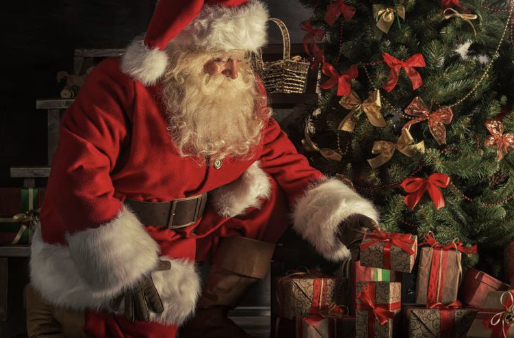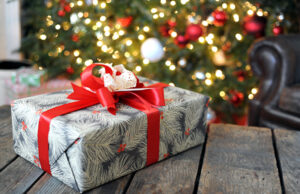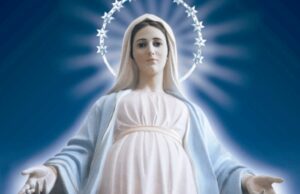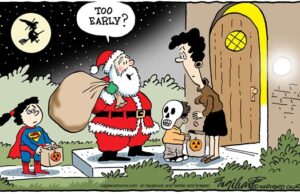How common Christmas traditions stem from pagan traditions and stories

Santa-Most people think of Santa and immediately think of St. Nicholas, the loving man whose toys were magical, but originally Santa Claus or Jólfaðr (Yule Father or Father Christmas later). This was the nickname for the Allfather aka Odin.
The patron god of death,war and wisdom, the All Father, also had a strange habit of during the nights of Yule, he would cross the skies rewarding the good and punishing the bad. All while riding his eight legged horse Sleipnir.
Kraumpus-Kraumpus was created long after the Norse gods were pushed from common religious beliefs, but there is some historical evidence that gives people the thought that either Loki or Odin would transform into the creature to punish those who angered the gods.
Reindeer-Looking at the popular story of Rudolph the Rednosed Reindeer, we see that Santa had only eight reindeer before Rudolph joined the party in 1939. The original eight were based upon the eight legs of Sleipnir.
Christmas trees-Christmas trees are an old Celtic tradition. Back before Christianity plagued pagan countries, the Celts called the trees Yule trees. Never cut down, the town would decorate the tree (or trees as the parties were held in the forest) with solar decorations to honor the gods. They were seen as druid protectors from the death winter brought. This is why they were never cut down as they are a tree that never dies in winter and will keep the death away. Cutting one down was a Christian tradition that dishonors the actual intent.
Holiday wreaths-Holly and mistletoe wreaths were made for the same reason that the Celts danced around trees. The berries were seen as a blessing from Frigga as they kept their color in a time of so much death, and so they braided wreaths and boughs of ivy and holly and hung mistletoe in doorways. They are a sacred tradition that ward off death and depression during winter.
Ornaments-Ornaments were small trinkets forged for the trees. They were hung as offerings and signs of devotion to the gods. Many were homeade and often took a very long time to make. This is why they used metals so that they could save time and resources that were precious to them by only having to make one and having it last far longer than other materials.
Large dinners and Christmas parties-The start of the large feasts for Jul or Yule started as a way to thank the gods for a bountiful harvest. Often in the large fires the diners sat around they would burn the bone and some meat to thank them for allowing them to survive another year. This also made the festivities easier as no one had to leave early if they were hungry, allowing for more dancing,worship and merriment.
Stockings-It is said that the Jul father would reward those who pleased him with small,mortal treats in stockings. Small socks or even boots left by the fireplace would be filled if you were good and appeased the gods and left to burn like coal if you spite them.
Treats for Santa-This one is pretty direct actually since Odin is a god and the Jul father, so the treats left for him were offerings, usually from children who wanted to appease him and get the sweet treats or gifts left by him.
Hopefully this has opened your eyes to the fact that no matter who you pray to, if you believe in Santa, wreaths or even flying reindeer, you have the pagans to thank, so this year Blessed Be, Happy Jul, Happy Hanukkah, Happy Kwanzaa, Merry Three Kings Day, Feliz Navidad, Blessed Saturnalia, Happy Soyal, Happy Yalda, Blessed Inti Raymi, Happy Midwinter, Merry St. Lucia’s Day and Happy Dong Zhi. (For more about these holidays look at my article on how other religions spend the winter season.)









You must be logged in to post a comment Login